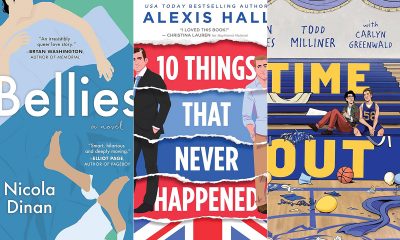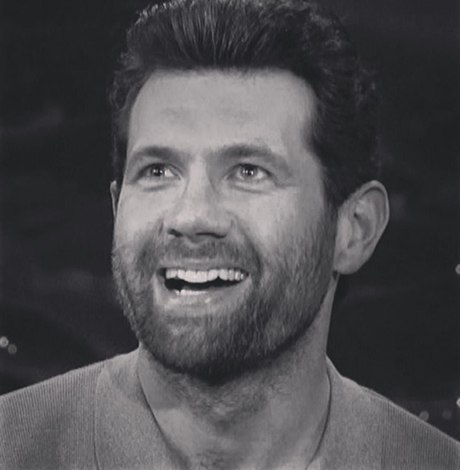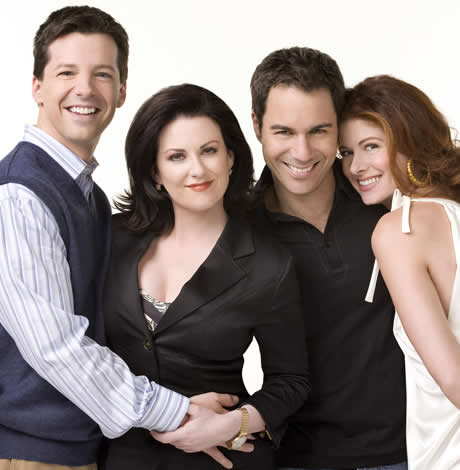a&e features
Sean Hayes on new film, saying farewell to Jack
Actor plays female lead in ‘Lazy Susan’

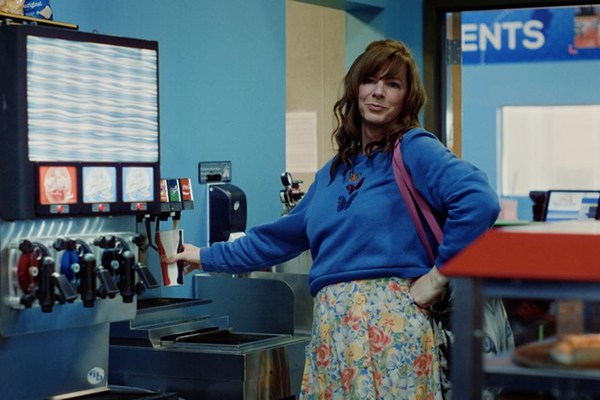
Even though he’s sheltering in place with his husband Scott Icenogle, this April is going to be a very busy month for award-winning actor Sean Hayes.
He’s starring as the lead female character in “Lazy Susan,” a movie he also co-wrote and co-produced, which drops on VOD and streaming channels on April 3.
Then on April 23, Hayes’s role as the exuberant Jack McFarland on “Will & Grace” comes to an end when the long-running NBC series broadcasts its final episode.
The press tours for these projects have been cancelled, but Hayes is promoting the projects from the comfort and safety of his own home. “Luckily,” the multi-talented star says, “we can do interviews over the phone to get the word out about shows that you can watch at home, so this whole process adheres to the rules of this horrible virus.”
When he’s not promoting his latest projects, Hayes has been watching some of his favorite movies and shows with his husband. “I’m a big sci-fi fantasy nerd,” he says. “I like all the classics like ‘Star Wars,’ ‘The Lord of the Rings,’ ‘Harry Potter’ and ‘Stranger Things,’ but I’m always on the lookout for great new shows.
He also admits that he’s a big fan of “This Old House.”
Hayes and Icenogle, a music producer, have been together for almost 14 years and have been married since 2014. He says the secret to their relationship, and to surviving social distancing together, is respect. “You have to fall in respect with somebody, not in love. Love will happen if there’s respect.”
Hayes’s latest project, “Lazy Susan,” has its roots in his career as a stand-up comedian (he’s an alumnus of Chicago’s famed Second City improvisational theatre troupe). “When I was 21 years old and living in Chicago,” he recalls, “I got a call from my agent for an audition to replace ‘the white guy’ on the sketch show ‘In Living Color.’”
“They were talking about Jim Carrey,” he adds.
“I went in with a bunch of character ideas and voices and wigs and things like that. One of the characters was Susan, who was just a girl who couldn’t get her life together. She always had excuses and she was never really happy. She dreams about having it all, but she does nothing to get it.”
“Decades later,” he continues, “a friend of mine suggested that I resurrect the character because we had so much fun with her. She came up with the name ‘Lazy Susan,’ and I thought ‘what a genius title.’”
Hayes developed the script with two old friends, Carrie Aizley and Darlene Hunt, both of whom also appear in the movie. Aizley plays Corrin, Susan’s long-suffering bandmate, and Hunt, who created the Showtime series “The Big C” and appears as Maggie in Apple TV’s “Dickinson,” plays Wendy.
The image of the kitchen turntable helped Hayes and his co-writers turn the character sketch into a full-length movie script. “We loved the built-in metaphor of a ‘lazy Susan,’” Hayes says, “of someone spinning around in circles, who can’t get their life together.” Hayes notes that alert viewers can spot lots of spinning motifs in the film, like when Susan and her friend Corrin are in the playground.
As the script took shape, Susan became Susan O’Connell who idly spends her days stealing magazines from her neighbors to create elaborate collages of her dream life while borrowing money from her mother to pay her rent. She’s looking for someone to take care of her, but when her world starts to crash around her, she finally finds a job and starts to take care of herself.
Working closely with director Nick Peet (“Grimm”), Hayes decided to play the character straight. Usually, when a man puts on a dress to play a female character, it’s played for laughs. Hayes and his colleagues wanted the comedy to come from the character and her outrageous life, not from the fact that he was wearing a skirt. “I always enjoy an acting challenge,” he says. “I like finding new voices. I wanted the challenge of playing a woman, not a guy in drag, not a transgender person. I wanted to play her as a real person, and not get laughs just because I was a man dressed as a woman.”
In addition to Aizley and Hunt, Hayes was able to recruit his dream cast for the movie. “It never, ever happens that the people you have in mind when you are writing the script say yes to being in the movie,” he says. “But we were very lucky to get the cast we wanted.”
The cast includes Allison Janney as Susan’s nemesis Velvet (“she is brilliant in everything she’s in,” gushes Hayes) and Margo Martindale as Susan’s mother (“who is such a funny, wonderful person”), as well as Jim Rash, who won an Oscar for “The Descendants” as Susan’s love interest and Matthew Broderick as Susan’s landlord.
Hayes thinks that audiences will be drawn to the off-beat movie and that the time is right for a movie that’s just trying to entertain. “I’m very proud of “Lazy Susan,” he says, “and very proud of everyone involved. I think it’s super fun and quirky and odd and a little creepy and hilarious. For me, it’s a throwback to the old independent movies of the ’90s like ‘Welcome to the Dollhouse’ and ‘Napoleon Dynamite’ that I’m such a fan of.”
He could also add his first full-length film, the delightful “Billy’s First Hollywood Screen Kiss” (1998) to that list.
While Hayes was working on “Lazy Susan,” he was also filming the final episodes of the groundbreaking NBC sitcom “Will & Grace.” Hayes originated the award-winning role of Jack when the series was initially released in 1998 (months after the premiere of “Billy”) and recreated the role when the series was revived in 2017.
The actor is proud of the legacy the show leaves in its wake. “I think it had a very positive impact,” he says. “It opened up a dialogue in America about LGBTQ inclusion and acceptance. A lot can be accomplished through the power of comedy. We succeeded in educating Americans without them even knowing it.”
Looking back over the experience, Hayes says, “I’m extremely grateful for the opportunity to play Jack and especially for the audience’s desire to see the show come back. That’s the only reason we did it, but now it feels like it’s time. I think the timing is perfect.”
The energetic star is working on two exciting new projects. Through his production company Mills Hazy, he’s developing an animated series for Netflix. “It’s about a spy who happens to be gay,” he says, “the gay James Bond. There’s a great cast involved, but I can’t say anything about it yet.”
He’s also in the midst of casting for a new play by out playwright Doug Wright called “Good Night Oscar.” Wright won the Pulitzer Prize for his one man-show “I Am My Own Wife;” he also wrote the books for the musicals “Grey Gardens” and “War Paint” and the play “Quills,” which premiered at D.C.’s Woolly Mammoth Theatre. The play will be helmed by out director Leigh Silverman.
Drawing on his own experience as a talk-show host and classical pianist, Hayes will play composer and raconteur Oscar Levant. Known for his rapier wit and encyclopedic recall, Levant was a regular on quiz shows and variety hours on both television and radio; he also had featured roles in classic Hollywood musicals like “Rhapsody in Blue,” “An American in Paris” and “The Band Wagon.”
The production was slated to premiere at Chicago’s Goodman Theatre in January 2021, with an anticipated transfer to Broadway, but plans are currently on hold. The unplanned break gives Hayes extra time to practice Levant’s quips, including the infamous line, “I knew Doris Day before she was a virgin.”
Hayes has an impressive theatrical resume. He played Mr. Applegate (the Devil) in Encores! Concert production of “Damn Yankees” and appeared as God on Broadway in the play “An Act of God” and with Kristin Chenoweth in the Burt Bacharach musical “Promises, Promises.” Hayes also hosted the Tony Awards in 2010.
In the meantime, fans can also enjoy “viral music video masters” Sean Hayes and Scott Icenogle on their official YouTube channel “The Kitchen Sync,” where they perform a hysterical mix of lip-sync and parody videos.
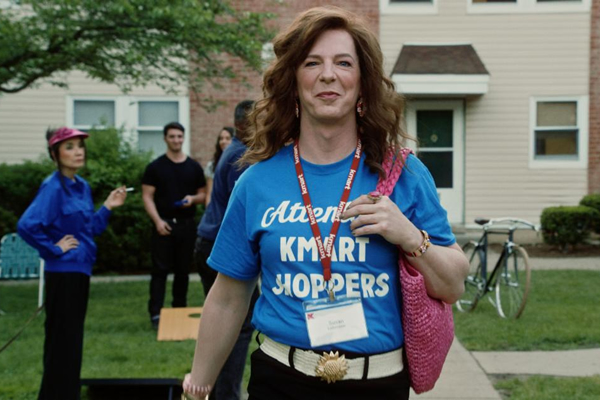
a&e features
Queer highlights of the 2026 Critics Choice Awards: Aunt Gladys, that ‘Heated Rivalry’ shoutout and more
Amy Madigan’s win in the supporting actress category puts her in serious contention to win the Oscar for ‘Weapons’

From Chelsea Handler shouting out Heated Rivalry in her opening monologue to Amy Madigan proving that horror performances can (and should) be taken seriously, the Critics Choice Awards provided plenty of iconic moments for queer movie fans to celebrate on the long road to Oscar night.
Handler kicked off the ceremony by recapping the biggest moments in pop culture last year, from Wicked: For Good to Sinners. She also made room to joke about the surprise hit TV sensation on everyone’s minds: “Shoutout to Heated Rivalry. Everyone loves it! Gay men love it, women love it, straight men who say they aren’t gay but work out at Equinox love it!”
The back-to-back wins for Jacob Elordi in Frankenstein and Amy Madigan in Weapons are notable, given the horror bias that awards voters typically have. Aunt Gladys instantly became a pop culture phenomenon within the LGBTQ+ community when Zach Cregger’s hit horror comedy released in August, but the thought that Madigan could be a serious awards contender for such a fun, out-there performance seemed improbable to most months ago. Now, considering the sheer amount of critics’ attention she’s received over the past month, there’s no denying she’s in the running for the Oscar.
“I really wasn’t expecting all of this because I thought people would like the movie, and I thought people would dig Gladys, but you love Gladys! I mean, it’s crazy,” Madigan said during her acceptance speech. “I get [sent] makeup tutorials and paintings. I even got one weird thing about how she’s a sex icon also, which I didn’t go too deep into that one.”
Over on the TV side, Rhea Seehorn won in the incredibly competitive best actress in a drama series category for her acclaimed performance as Carol in Pluribus, beating out the likes of Emmy winner Britt Lower for Severance, Carrie Coon for The White Lotus, and Bella Ramsey for The Last of Us. Pluribus, which was created by Breaking Bad’s showrunner Vince Gilligan, has been celebrated by audiences for its rich exploration of queer trauma and conversion therapy.
Jean Smart was Hack’s only win of the night, as Hannah Einbinder couldn’t repeat her Emmy victory in the supporting actress in a comedy series category against Janelle James, who nabbed a trophy for Abbott Elementary. Hacks lost the best comedy series award to The Studio, as it did at the Emmys in September. And in the limited series category, Erin Doherty repeated her Emmy success in supporting actress, joining in yet another Adolescence awards sweep.
As Oscar fans speculate on what these Critics Choice wins mean for future ceremonies, we have next week’s Golden Globes ceremony to look forward to on Jan. 11.
a&e features
Looking back at the 10 biggest A&E stories of 2025
‘Wicked,’ Lady Gaga’s new era, ‘Sexy’ Bailey and more

Although 2025 was a year marked by countless attacks on trans rights and political setbacks, the year also saw brilliant queer artists continuing to create art. From Cannes and Sundance Award winners now vying for Oscar consideration to pop icons entering new stages of their careers, queer people persevered to tell their stories through different media.
With the state of the world so uncertain, perhaps there’s no more vital time to celebrate our wins, as seen through some of this year’s top pop culture moments. While there’s no collection of 10 stories that fully encompass “the most important” news, here are some events that got the gays going:
10. ‘Mysterious Gaze of the Flamingo’ wins big at Cannes

The Cannes Film Festival has become a crucial start for films hoping to make their way to the Oscars, and first-time director Diego Céspedes won the top Un Certain Regard prize for his intimate western “The Mysterious Gaze of the Flamingo.” The film is set in the ‘80s and is intended as an allegory for the AIDS epidemic. Seeing a film that unpacks vital queer history win one of the most coveted awards at Cannes has been a huge point of pride in the independent filmmaking community.
Since the film bowed at Cannes, it has been selected as Chile’s Oscar entry in the Best International Feature race. Speaking with The Blade during the film’s AFI Fest run in October, Céspedes said: At first, I was kind of scared to have this campaign position in the times that we’re living [in] here. But at the same time, I think the Oscars mean a huge platform — a huge platform for art and politics.”
9. ‘The Last of Us’ returns for an even gayer season 2
While the first season of The Last of Us gave us one of TV’s most heartbreaking queer love stories in the episode “Long, Long Time,” Season 2 doubled down on its commitment to queer storytelling with the blossoming relationship between Ellie (Bella Ramsey) and Dina (Isabela Merced). The show expanded on the pair’s relationship in the original video game, making it perhaps the central dynamic to the entire season. That unfortunately came with more homophobic backlash on the internet, but those who checked out all the episodes saw a tender relationship form amid the show’s post-apocalyptic, often violent backdrop. For their performance, Ramsey was once again nominated for an Emmy, but Merced deserved just as much awards attention.
8. ‘Emilia Pérez’ sparks controversy
Jacques Audiard’s genre-bending trans musical “Emilia Pérez” proved to be an awards season juggernaut this time last year, winning the Golden Globe for Best Musical/Comedy. But when the lead star Karla Sofia Gascón’s racist, sexist, and homophobic old tweets resurfaced, the film’s Oscar campaign became a tough sell, especially after Netflix had tried so hard to sell Emilia Pérez as the “progressive” film to vote for. Mind you, the film had already received significant backlash from LGBTQ+ audiences and the Mexican community for its stereotypical and reductive portrayals, but the Gascón controversy made what was originally just social media backlash impossible to ignore. The only person who seemed to come out of the whole debacle unscathed was Zoe Saldaña, who won the Oscar for Best Supporting Actress over Ariana Grande.
7. ‘Sorry, Baby’ establishes Eva Victor as major talent
Back in January at the Sundance Film Festival, Eva Victor (known by many for her brand of sketch comedy) premiered their directorial debut “Sorry, Baby” to rave reviews, even winning the Waldo Salt Screening Award. Victor shadowed Jane Schoenbrun on the set of “I Saw the TV Glow,” and seeing Victor come into their own and establish such a strong voice immediately made them one of independent cinema’s most exciting new voices. A memorable scene in the film sees the main character, Agnes (played by Victor), struggling to check a box for male or female, just one example of how naturally queerness is woven into the fabric of the story.
Most recently, Victor was nominated for a Golden Globe for her performance in the film, and she’s represented in a category alongside Jennifer Lawrence (“Die My Love”), Jessie Buckley (“Hamnet”), Julia Roberts (“After the Hunt”), Renate Reinsve (“Sentimental Value”) and Tessa Thompson (“Hedda”). The film also received four Independent Spirit Award nominations overall.
6. Paul Reubens comes out in posthumous doc

While Paul Reubens never publicly came out as gay before passing away in 2023, the two-part documentary “Pee-wee as Himself” premiered back in May on HBO Max, giving the legendary comedian a chance to posthumously open up to the world. Directed by Matt Wolf, the documentary explores how Reubens found his alter ego Pee-Wee Herman and why he kept his private life private.
The documentary won an Emmy in the Outstanding Documentary or Nonfiction Special category and remains one of the most critically acclaimed titles of the year with a 100% Rotten Tomatoes score. Also worth noting, the National Geographic documentary Sally told the posthumous coming out story of Sally Ride through the help of her long-time partner, Tam O’Shaughnessy.
5. Lady Gaga releases ‘Mayhem’
Lady Gaga entered a new phase of her musical career with the release of Mayhem, her seventh album to date. From the frenzy-inducing pop hit Abracadabra to the memorable Bruno Mars duet featured on “Die With a Smile,” seeing Gaga return to her roots and make an album for the most die-hard of fans was especially rewarding after the underwhelming film releases of “House of Gucci” and “Joker: Folie à Deux.” Gaga has been touring with The Mayhem Ball since July, her first arena tour since 2018. She even extended her tour into 2026 with more North American dates, so the party isn’t stopping anytime soon. And Gaga is even set to make an appearance next May in “The Devil Wears Prada 2.”
4. Cynthia Erivo, Ariana Grande perform at the Oscars

While “Wicked: For Good” didn’t quite reach the heights of the first film, we will forever have Cynthia Erivo and Ariana Grande’s breathtaking live performance that opened the 97th Academy Awards. The pair sang a rendition of “Over the Rainbow,” “Home,” and “Defying Gravity,” paying proper homage to the original 1939 “Wizard of Oz.” Even non-Wicked fans can’t deny how magical and brilliantly staged this performance was. With both Erivo and Grande up for acting Oscars last year, they’re hoping to repeat success and make history with consecutive nominations. Either way, let’s hope there’s another live performance in the making, especially with two new original songs (The Girl in the Bubble and No Place Like Home) in the mix.
3. Indya Moore speaks out against Ryan Murphy
Indya Moore has consistently used social media as a platform for activism, and in September, posted a 30-minute Instagram live speaking out against “Pose” co-creator Ryan Murphy. Moore claimed that Murphy wasn’t being a true activist for trans people. “Ryan Murphy, we need you to do more. You need to address the racism, the violence, and the targeting of people on your productions, Ryan Murphy. You do need to make sure trans people are paid equally. Yes, Janet did the right thing,” Moore said. Murphy was also back in the headlines this year for the critically panned “All’s Fair” and the controversial “Monster: The Ed Gein Story” starring Laurie Metcalf and Charlie Hunnam.
2. Cole Escola wins Tony for Best Leading Actor
Few pop culture moments this year brought us together more than Cole Escola winning a Tony award for “Oh, Mary!” the Broadway show they created, wrote and starred in (we love a triple threat!) Escola made history by becoming the first nonbinary person to win a Tony in the leading actor category, and seeing them excitedly rush to the stage wearing a Bernadette Peters-inspired gown instantly became a viral social media moment.
The cherry on top of Escola’s major moment is the recent news that they are writing a Miss Piggy movie with Jennifer Lawrence and Emma Stone producing — news that also broke the internet for the better. We cannot wait!
1. Jonathan Bailey makes gay history as ‘Sexiest Man Alive’

The same year as his on-screen roles in blockbusters “Jurassic World Rebirth” and “Wicked: For Good,” Jonathan Bailey made history as the first openly gay man to be named People magazine’s “Sexiest Man Alive.” The fact that it took 40 years for an openly gay man to earn the title is a signifier of how far we still have to go with queer representation, and seeing Bailey celebrated is just one small step in the right direction.
“There’s so many people that want to do brilliant stuff who feel like they can’t,” he told PEOPLE, “and I know the LGBT sector is under immense threat at the moment. So it’s been amazing to meet people who have the expertise and see potential that I could have only dreamed of.” In 2024, Bailey founded the charity titled The Shameless Fund, which raises money for LGBTQ+ organizations.
a&e features
Your guide to D.C.’s queer New Year’s Eve parties
Ring in 2026 with drag, leather, Champagne, and more

With Christmas in the rear view mirror, we can turn our attention to ringing in a much-anticipated New Year with a slew of local LGBTQ parties. Here’s what’s on tap.
Pitchers
This spacious Adams Morgan bar is hosting the “Pitchers’ Perfect New Year’s Eve.” There will be a midnight Champagne toast, the ball drop on the big screens, and no cover, all night long. The bar doesn’t close until 4 a.m., and the kitchen will be open late (though not until close). All five floors will be open for the party, and party favors are promised.
Trade
D.C.’s hottest bar/club combo is leaning into the Shark motif with its NYE party, “Feeding Frenzy.” The party is a “glitterati-infused Naughty-cal New Year’s Even in the Shark Tank, where the boats are churning and the sharks are circling.” Trade also boasts no cover charge, with doors opening at 5 p.m. and the aforementioned Shark Tank opening at 9 p.m.. Four DJs will be spread across the two spaces; midnight hostess is played by Vagenesis and the two sea sirens sensuously calling are Anathema and Justin Williams.
Number Nine
While Trade will have two DJs as part of one party, Number Nine will host two separate parties, one on each floor. The first floor is classic Number Nine, a more casual-style event with the countdown on TVs and a Champagne midnight toast. There will be no cover and doors open at 5 p.m. Upstairs will be hosted by Capital Sapphics for its second annual NYE gathering. Tickets (about $50) include a midnight Champagne toast, curated drink menu, sapphic DJ set by Rijak, and tarot readings by Yooji.
Crush
Crush will kick off NYE with a free drag bingo at 8 p.m. for the early birds. Post-bingo, there will be a cover for the rest of the evening, featuring two DJs. The cover ($20 limited pre-sale that includes line skip until 11 p.m.; $25 at the door after 9 p.m.) includes one free N/A or Crush, a Champagne toast, and party favors (“the legal kind”). More details on Eventbrite.
Bunker
This subterranean lair is hosting a NYE party entitled “Frosted & Fur: Aspen After Dark New Year’s Eve Celebration.” Arriety from Rupaul Season 15 is set to host, with International DJ Alex Lo. Doors open at 9 p.m. and close at 3 p.m.; there is a midnight Champagne toast. Cover is $25, plus an optional $99 all-you-can-drink package.
District Eagle
This leather-focused bar is hosting “Bulge” for its NYE party. Each District Eagle floor will have its own music and vibe. Doors run from 7 p.m.-3 a.m. and cover is $15. There will be a Champagne toast at midnight, as well as drink specials during the event.
Kiki, Shakiki
Kiki and its new sister bar program Shakiki (in the old Shakers space) will have the same type of party on New Year’s Eve. Both bars open their doors at 5 p.m. and stay open until closing time. Both will offer a Champagne toast at midnight. At Kiki, DJ Vodkatrina will play; at Shakiki, it’ll be DJ Alex Love. Kiki keeps the party going on New Year’s Day, opening at 2 p.m., to celebrate Kiki’s fourth anniversary. There will be a drag show at 6 p.m. and an early 2000s dance party 4-8 p.m.
Spark
This bar and its new menu of alcoholic and twin N/A drinks will host a NYE party with music by DJ Emerald Fox. Given this menu, there will be a complimentary toast at midnight, guests can choose either sparkling wine with or without alcohol. No cover, but Spark is also offering optional wristbands at the door for $35 open bar 11 p.m.-1 a.m. (mid-shelf liquor & all NA drinks).

